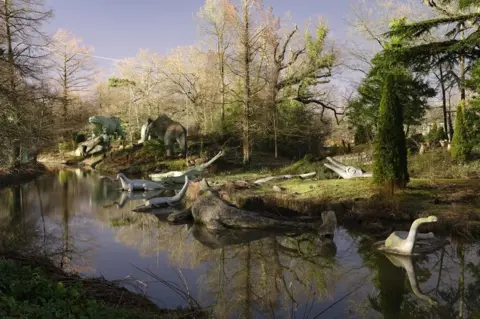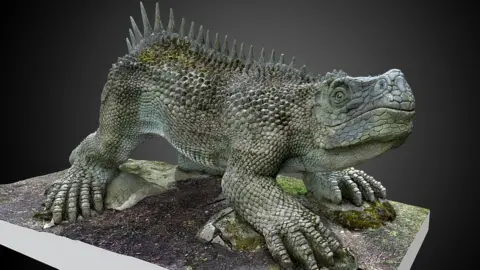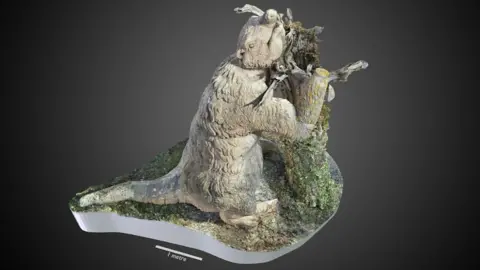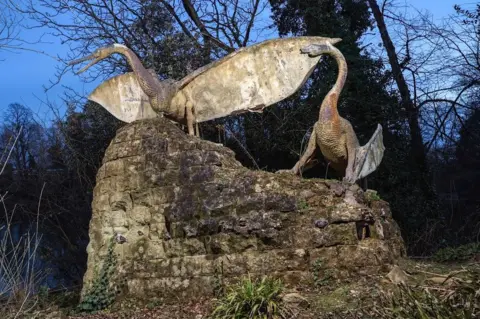Crystal Palace Park dinosaurs turned into interactive 3D models
 Historic England Archive
Historic England ArchivePeople are now able to take a closer look at the famous Crystal Palace Park dinosaurs after they were turned into interactive 3D models.
The 29 Grade I-listed sculptures were created between 1853 and 1855 and sit on an island in the south London park.
Digital scans were carried out to create the photogrammetric models.
Historic England said the work meant it could study "the sculptures' conservation problems" and aid restoration work.
The heritage body and the Friends of Crystal Palace Dinosaurs created the 3D models.
 Rhys Griffin/FCPD & Historic England
Rhys Griffin/FCPD & Historic EnglandThe creatures were created by artist Benjamin Waterhouse Hawkins and are thought to be the world's first attempt to model extinct animals at life-size, based on fossil remains as evidence.
While commonly known as the Crystal Palace dinosaurs, only four of the sculptures are technically dinosaurs with the others being ancient mammals, amphibians, and marine and flying reptiles.
While knowledge of dinosaurs has improved since their creation, meaning several of them have inaccuracies, they are still considered by many to be an important moment in the history of science.
 Historic England
Historic EnglandHowever, being nearly 170 years old, the models are very fragile and have suffered damage.
Historic England said the new interactive models mean people can "get up close and personal with the 'dinosaurs' without disrupting the vulnerable animal artworks or their setting".
"The models also allow conservators to benchmark the condition of the fragile creatures, decide where repairs are most needed, and help shape plans for their maintenance into the future."
 Historic England
Historic England
Follow BBC London on Facebook, Twitter and Instagram. Send your story ideas to [email protected]
